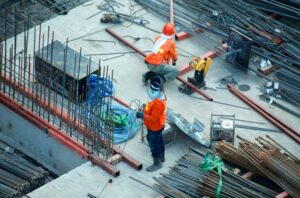How foundation repairs can increase your home’s resale value
 One of the essential ways to keep increasing the value of your house is to ensure its base. The base, a simple foundation in a literal sense, serves as the core of the price for your house. Explore with me how foundation repair improves your house’s resale value immensely and why this is one type of investment every homeowner will make. How foundation issues lower the value of your home.
One of the essential ways to keep increasing the value of your house is to ensure its base. The base, a simple foundation in a literal sense, serves as the core of the price for your house. Explore with me how foundation repair improves your house’s resale value immensely and why this is one type of investment every homeowner will make. How foundation issues lower the value of your home.
The impact of foundation problems on home value
Foundation issues can have a substantial negative effect on a home’s value. Estimates suggest that homes with foundation problems may see a reduction in value ranging from 10% to 15%. To put this into perspective, a $300,000 home could potentially lose $30,000 to $45,000 in value due to foundation issues. This significant decrease underscores the importance of addressing these problems promptly.
How foundation repairs preserve and increase value
Structural integrity
One of the most significant ways that foundation repairs increase home value is by enhancing the structural integrity of the building. Often, foundation problems arise from differential settlement, where parts of the foundation sink unevenly into the soil. This can lead to several issues throughout the house, such as:
- Doors and windows that do not open or close properly
- Ceiling cracks
- Floor cracks
- Wall cracks
This way, foundation repair is not only about dealing with minor cosmetic problems but also about ensuring long-term stability for your house. You’ll find that enhanced structural integrity forms a very attractive sales pitch for any homebuyer.
Cosmetic improvements
Foundation repairs often enhance the aesthetics of a home. The stabilizing of the foundation leads to the resolution of many visible damage occurrences such as cracks in walls and uneven floors. An enhanced look can heighten the curb appeal and interior appeal to great levels, thus making it attractive to more potential buyers.
Transferable warranties
Many professional foundation repair companies have warranties on their work. That, especially if it’s transferable to new owners, is an excellent selling point. Such warranties give buyers peace of mind that in the event problems appear later, they will not end up with a bill to have them fixed.
Foundation repair cost-benefit analysis
While foundation repair is a huge investment, it is also worth considering the long-term financial benefits:
- Prevent further damage: Early addressing of foundation issues can prevent extensive and costly damage in the future.
- Maintain value of home: Repairing the foundation will preserve the value of your home at present and prevent a huge decline in worth.
- Increased marketability: Houses whose foundations have been repaired can be easier to sell since the purchasing party is guaranteed of the integrity of the structure.
Common foundation repair techniques
There are several foundation repair techniques. Each is suited to a different type of problem:
Slab jacking
Also known as mud jacking, this is a method used on concrete foundations that are sinking. It involves injecting a mixture of grout or foam below the foundation to lift it. This can be a cost-effective solution for minor foundation issues.
Piering
Piering is a more robust solution that involves installing support systems below the foundation. There are different types of piers:
- Steel piers: The gold standard, it may be said, these piers drive deep into stable soil, hence effectively lifting and stabilizing a home.
- Concrete piers: Similar to the previous type, these use concrete cylinders to stabilize the foundation.
- Helical piers: These screw-like piers are particularly effective in specific soil conditions.
Polyurethane foam jacking
This is a modern technique, in which expanding polyurethane foam is injected under the foundation. It is particularly useful in filling voids and stabilizing soil.
The selling process with a repaired foundation
Transparency is the best policy when selling a home that has undergone foundation repairs. Here are a few tips:
- Document everything: Keep detailed records of all repairs, including before and after photos, inspection reports, and warranty information.
- Highlight the improvements: Don’t shy away from discussing the repairs. Instead, emphasize how they’ve improved the home’s stability and longevity.
- Offer warranty details: If the repairs include a transferable warranty, ensure buyers are aware of this great benefit.
- Consider pre-listing inspections: Pre-listing professional inspections will add even more buyer confidence.
The alternative: Selling as-is
Generally, foundation problems should be fixed before selling, but it is not always possible for homeowners. There are a few things to know before selling without making repairs:
- The house will probably sell at a significantly lower price than its true value.
- Fewer potential buyers will see the house, since most buyers and lenders fear houses that have foundation problems.
- More time may be spent trying to sell the house, because buyers might be afraid to buy it or take extra time to inspect and negotiate.
Conclusion
 Foundation repairs, although potentially costly upfront, can really help increase the resale value of your home. You are fixing a problem, but you are also investing in your property’s future by doing so. A repaired foundation offers structural integrity, improved aesthetics, and peace of mind to potential buyers.
Foundation repairs, although potentially costly upfront, can really help increase the resale value of your home. You are fixing a problem, but you are also investing in your property’s future by doing so. A repaired foundation offers structural integrity, improved aesthetics, and peace of mind to potential buyers.
A home’s foundation is literally the base. Ensuring stability in that base is key to keeping and building up the value of the property. It does not matter if you’re planning to sell soon or simply want to protect your investment; foundation problems are something any homeowner should top the list to deal with.
By taking proactive steps to repair and maintain your home’s foundation, you’re not only preserving the value it has today, but also paving the way for future increases in value. In the real estate world, a solid foundation is both literally and metaphorically an asset that could boost your home’s appeal and worth in the market by a lot.


